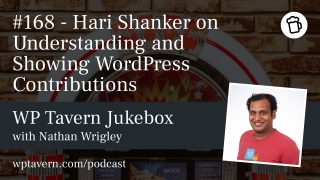Roger Williams, partnership and community manager for North America at Kinsta, discusses how companies can sponsor WordPress contributors and why doing so matters. Kinsta launched a sponsored contributions program in January 2025; Roger describes the thinking, practical steps, and tensions involved in bringing business and community together.
Why sponsor contributions?
– Open source projects like WordPress started from passion, but as WordPress now powers a large portion of the web, sustainable funding and support are increasingly necessary.
– Sponsorship expands the pool of people supporting the project by bringing companies into conversations they might otherwise avoid.
– To get buy-in from businesses, frame sponsorship in terms they understand: strategic, operational, and second-order benefits.
Three kinds of benefits
1. Strategic: Direct alignment with business goals. For example, hosting companies benefit when WordPress is secure, performant, and stable—reducing support and infrastructure costs.
2. Operational: Addressing technical debt and offloading maintenance. Contributing resources to the project helps improve shared components and reduces long-term internal costs.
3. Second-order: Less measurable benefits such as networking, hiring pipelines, reputation, community goodwill, and indirect brand visibility.
Audience segments to reach
– Project insiders: already know the value of contributing.
– Companies close to contributing: those that use WordPress heavily but need help seeing how to give back.
– The general public: people unfamiliar with how open source works and why sponsorship matters.
Practical advice for companies
– Start small: set aside a reasonable budget and begin—don’t overthink or wait for a perfect system.
– Focus initially on sponsoring individual contributors; it’s a simpler entry point than asking internal teams to allocate engineering time.
– Build simple processes: intake forms, clear criteria, tracking spreadsheets, and a lightweight agreement that sets expectations.
– Be cautious with marketing: sponsorship should prioritize contributing to the project, not aggressive promotional leverage. Low-effort asks (a blog post, a short podcast interview) are reasonable.
– Track and showcase results: document who is sponsored, what they’re doing, and tangible outputs (posts, talks, merged patches, events).
– Prepare answers for internal objections: tailor messaging to leadership—use strategic/operational/second-order talking points that map to company goals.
Practical advice for contributors seeking sponsorship
– Don’t simply request money; prepare a concise pitch linking your work to company benefits: what you do, how it helps, and clear outcomes.
– Contact relevant companies (start with major hosting providers) and ask about formal sponsorship programs or offer to help set one up.
– Be ready to explain mentoring and community impact—sponsors value contributors who help grow participation.
What kinds of contributions count?
– Beyond core code work, meaningful contributions include documentation, Polyglots (translations), event organizing (WordCamps and contributor days), and content creation (podcasts, videos). These all improve adoption, usability, and reach.
– Decide which areas align with your organization’s priorities—e.g., internationalization for companies with many non-English-speaking customers.
Coordination beyond single companies
– There are existing collective efforts like the WP Community Collective (WPCC) that aim to coordinate funding and distribution of sponsorship. Consortiums are possible but add complexity.
– Roger’s view: while collaborative models are valuable, don’t let the desire for a perfect centralized system prevent individual organizations from starting now.
Internal readiness and timing
– Understand organizational goals and align sponsorship targets to them.
– Be patient but prepared: internal approvals may take time; once budget is available, be ready to act quickly and demonstrate outcomes.
– Flesh out operational details: payment methods, legal considerations, and expectations around public mentions or endorsements.
Community tensions and balance
– There’s a natural tension between long-standing philanthropic contributors and business-focused sponsorship approaches. Roger argues that expanding the conversation to include strategic and operational rationales brings more participants into the fold rather than excluding existing contributors.
– The goal is to grow the community and resources while respecting the project’s culture and avoiding turning open source into purely commercial initiatives.
Practical first steps checklist
– Allocate a modest budget for sponsorships.
– Design a simple intake and vetting process.
– Identify areas that align with company goals (core, docs, Polyglots, events).
– Find contributors with proven work and mentoring impact.
– Request modest public-facing content (posts, interviews) but prioritize project outcomes.
– Track and report results to leadership.
Final notes
Roger emphasizes humility and collaboration—he sees his role as learning from the community and helping Kinsta participate responsibly. He encourages both companies and contributors to start conversations and develop simple, respectful sponsorship arrangements that benefit WordPress and its ecosystem.
Contact
Roger is active on LinkedIn and welcomes conversations about sponsorship, contribution, and building responsible programs.





